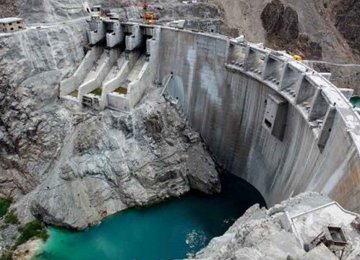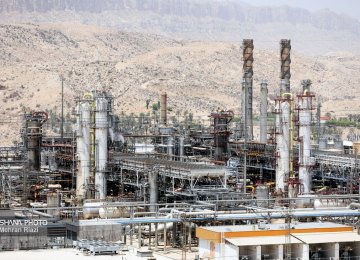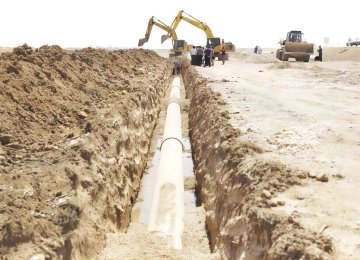The Energy Ministry has approved the transfer of 50 million cubic meters of water from the Shahriar Dam in Mianeh County, East Azarbaijan Province, to Ardabil Province, the representative of Ardabil, Nir, Namin and Sareyn in the parliament said.
“The project seeks to address the drinking water issues of the urban and rural areas of Ardabil,” Ali Nikzad was also quoted as saying by Mehr News Agency.
Shahriar Dam is constructed on the Ghezel-Ozan River, 35 km from the city of Mianeh. The main objectives of the double arch concrete dam are to assist the irrigation and industrial activities of both East Azarbaijan and Gilan provinces.
Ghezel-Ozan is one of the longest rivers in Iran, originating from the Chehel Cheshmeh Mountains between Saqqez and Divandarreh in Kurdestan Province and flowing through Zanjan, East Azarbaijan, Ardabil and Gilan provinces.
The dam also provides water for a hydroelectric power plant with a generation capacity of 27 megawatts.
Referring to another water project, Nikzad said the construction of Anbaran Dam in Namin County has registered 82% progress and is expected to be completed in six months.
“The dam has a capacity of 1 million cubic meters of water and will supply farms and feed downstream wells and aqueducts upon completion,” he said, stressing that the dam will help irrigate 700 hectares.
Ardabil Province has a cool climate during summer, but the winters are bitterly cold with temperatures plummeting to -25 degrees centigrade.
Its famous natural region is the Sabalan Mountain and mineral springs. Large parts of the province are green and forested. It also has a number of lakes that are habitats of water birds.
According to provincial officials, the agricultural sector in the province annually produces an estimated 4.5 million tons of products, including lentils, canola seeds, potatoes, sugarbeet, wheat and barley.
Its products are exported to the Republic of Azerbaijan, Iraq, Turkey, Georgia and the UAE, among other countries.
Recent Projects
The first phase of the project to supply water to the cities of Namin and Anbaran has recently become operational.
With the launch of the project, 80 liters per second of water are being supplied to the two cities.
The second phase of the project is expected to be completed next year and increase the supply capacity to 167 liters per second.
Besides supplying water to the cities of Anbaran and Namin, the second phase will also meet the water requirements of five villages.
Another dam project in the northwestern Ardabil Province was completed in the spring to help supply water to households and farming sectors.
With a capacity of 182 million cubic meters of water, Emarat Dam in Germi County is the largest in Ardabil and can irrigate 23,000 hectares.
The dam is built on Darehroud river about 80 km from Germi County. Around 15 mcm of its water are allocated for drinking, 75 mcm are used in farming and 28 mcm for environmental purposes.
To help control water consumption in the province, smart meters have been installed on water wells.
The number of smart meters installed on water wells in Ardabil in the past few years has exceeded 2,000. This will help utility companies closely monitor water use online.
Smart wells are advanced wells with sensors and valves installed downhole to allow easy and systematic monitoring.
The injudicious use of groundwater from legal and illegal wells has emerged as a major problem in Iran's struggle to overcome the water crisis that has gotten worse over the past half century, as precipitation declines and consumption rises.











Add new comment
Read our comment policy before posting your viewpoints